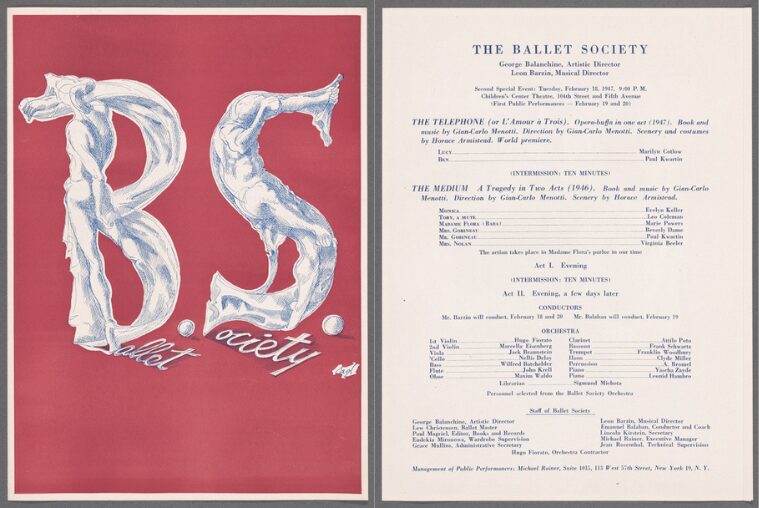April 25, 2024
#SAB90 – 1954: The Nutcracker debuts at New York City Ballet featuring children from SAB
Read the latest edition of #SAB90 to learn more about the history of SAB students performing with the New York City Ballet.

Over the past 90 years, the School of American Ballet has contributed immeasurably to the artistic life of America: giving birth to an internationally acclaimed ballet company, shaping generations of finely trained dancers, and establishing an American style of classical ballet that stands alongside the French and Russian classical traditions. Learn more about the School’s history and influence as we share monumental moments in honor of #SAB90.
Lincoln Kirstein and George Balanchine started a performing arm of the School soon after it opened, yet a number of attempts to establish a permanent company in the decade that followed did not find success–despite the creation of Balanchine masterpieces like Serenade and Concerto Barocco during that time.

After the war, Balanchine and Kirstein formed the subscription-based Ballet Society, which introduced audiences to new Balanchine works such as The Four Temperaments (1946) and Orpheus (1948). This group performed at New York’s City Center for Music and Drama. Impressed by one of Ballet Society’s performances, Morton Baum, then chairman of City Center’s Finance Committee, approached Kirstein with a proposition — to establish their group as the resident company of New York City Center and relaunch as “New York City Ballet.”

New York City Ballet’s first official season opened on October 11, 1948, with three Balanchine ballets: Concerto Barocco, Orpheus, and Symphony in C. The original roster reads: George Balanchine, Artistic Director; Lincoln Kirstein, General Director; Leon Barzin, Musical Director; Lighting by Jean Rosenthal; Frances Hawkins, General Manager. Principal dancers: Maria Tallchief, Marie-Jeanne, Tanaquil Le Clercq, Beatrice Tompkins, Jocelyn Vollmar, Nicholas Magallanes, Francisco Moncion, Herbert Bliss, and Todd Bolender. A review from dance critic John Martin appeared in The New York Times the following day, concluding simply with, “[The program] will all be repeated this evening; and this morning’s advice is to be among those present.”
That same year, Balanchine invited Jerome Robbins to join the company as Assistant Artistic Director, setting the stage for decades of artistic excellence to come. The company performed at New York City Center for sixteen years before moving to the newly built New York State Theater (now the David H. Koch Theater) on April 24, 1964. New York City Ballet continued to grow and establish itself as an independent artistic entity, with its early dancers consisting almost entirely of students from the School of American Ballet. Now in its 75th year, SAB alumni still make up the majority of the company. NYCB also provides invaluable performing experience for many SAB students in a number of ballets featuring roles for children, included George Balanchine’s The Nutcracker®, A Midsummer Night’s Dream, The Sleeping Beauty, and more.
While the new company shared the same artistic leadership as the School, SAB remained an entirely independent organization with separate finances and governance. Since 1948, SAB has been the official school of New York City Ballet providing world class dancers for what has grown to become America’s largest ballet company.
April 25, 2024
Read the latest edition of #SAB90 to learn more about the history of SAB students performing with the New York City Ballet.
February 26, 2024
Our new monthly series, #SAB90, we'll be sharing a short article detailing highlights of the School's history. Read our latest edition to learn about more early faculty members who laid the groundwork for the School's legacy.
January 19, 2024
Our new monthly series, #SAB90, we'll be sharing a short article detailing highlights of the School's history. Read our first edition for an overview on how SAB was first established by co-founders Lincoln Kirstein and George Balanchine.